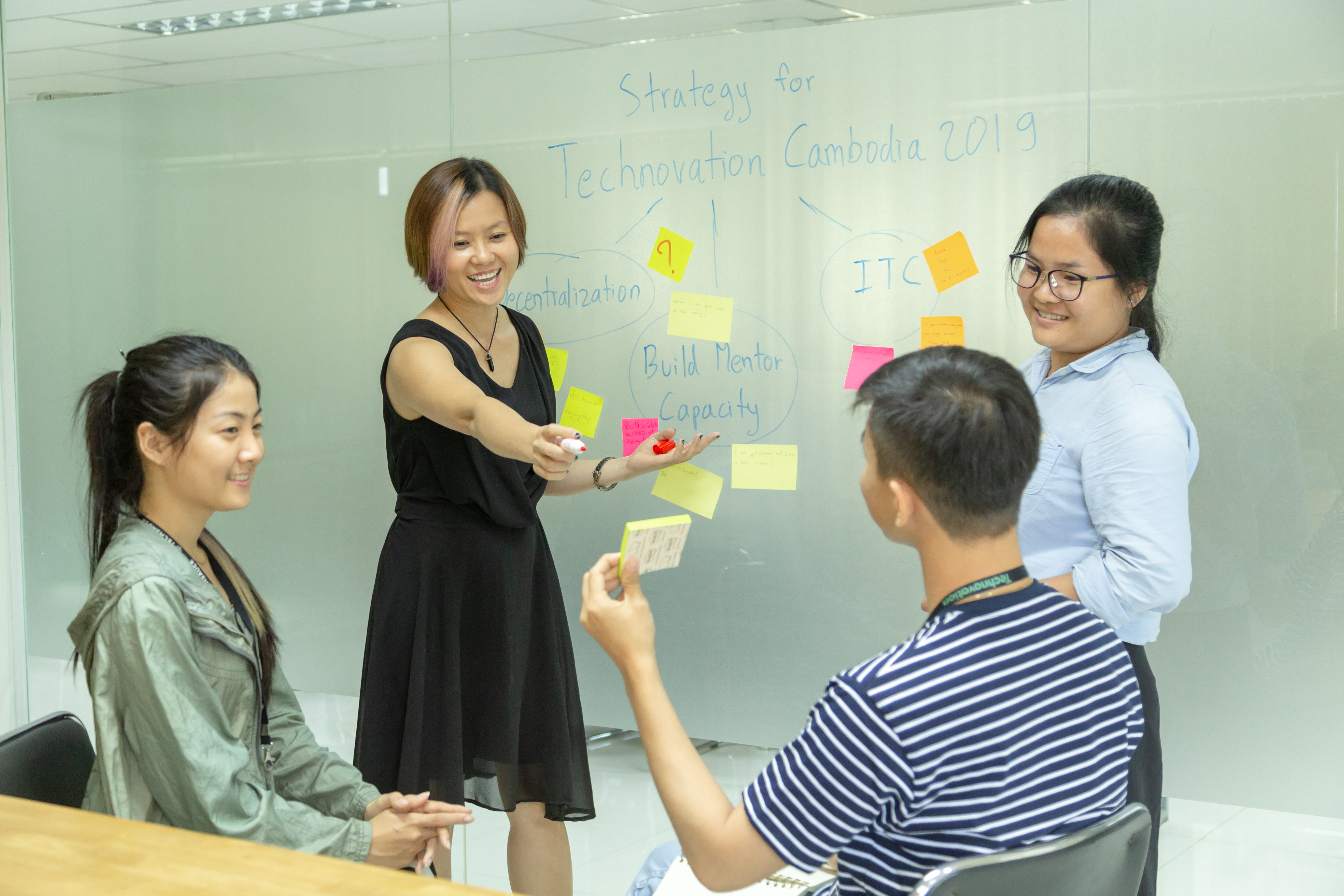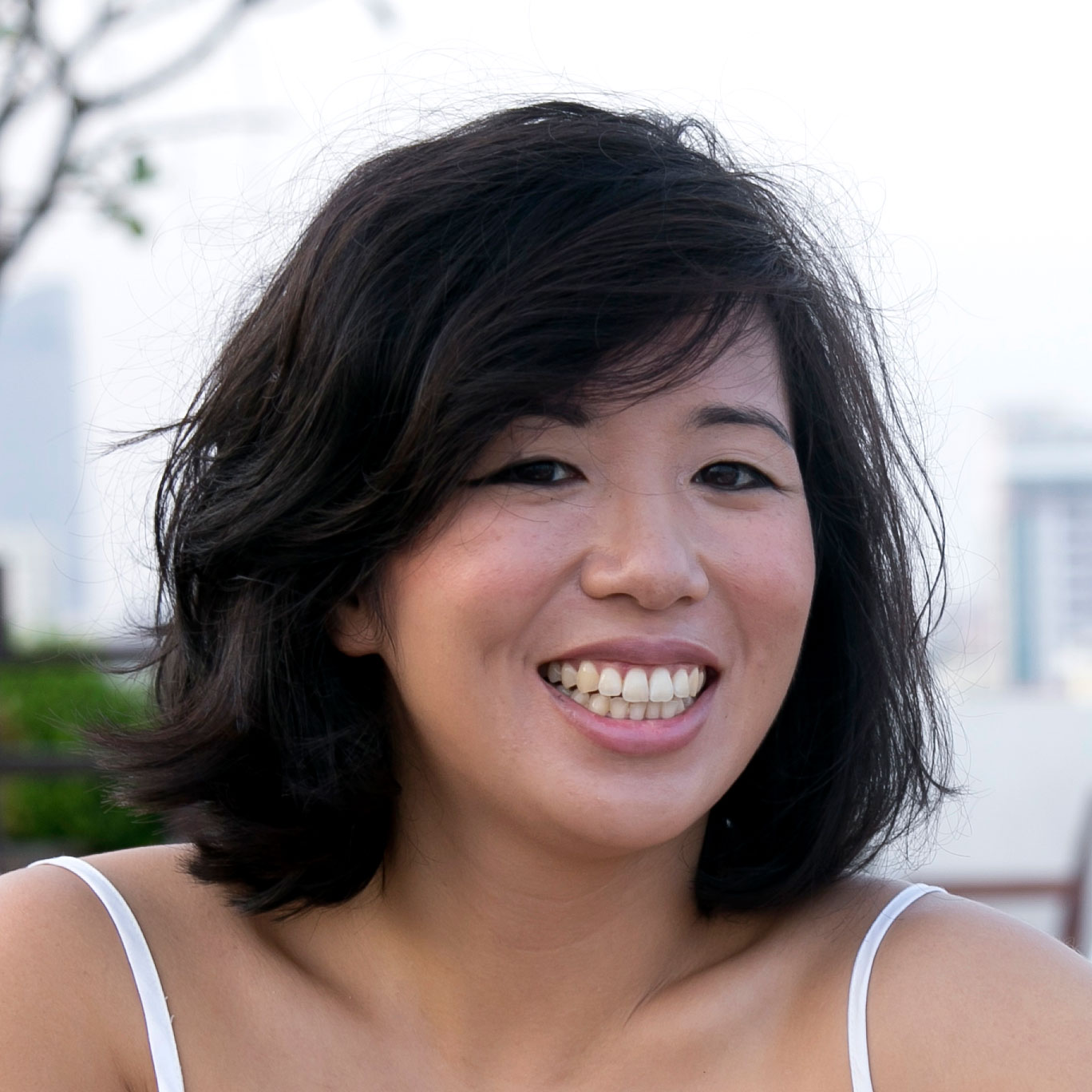Let us know what type of content you'd like to see more of. Fill out our three question survey.
Building a Culture of Innovation in Cambodia
Feb 26, 2019
Many in international development want to be “innovative,” but how do workplaces develop cultures that promote useful innovation? The U.S. Agency for International Development (USAID) launched Development Innovations (DI) in 2013 to help Cambodian civil society organizations and tech companies leverage technology to address social needs. This objective would require new ways of thinking to create new ways for solving problems.
A cohort of young Cambodians have worked directly for DI since its inception, and nearly half of DI’s current staff are under 30 years old. Attracted by its culture of innovation, DI has created a positive workplace where staff, visitors, and clients learn from each other and promote exchange, creativity, and outreach. As described by Setha Rath, a senior program manager: “We adapt, we are flexible, we test new things out—that’s innovation to me.”
DI’s results for Cambodian society have been impressive. Among them, the DI team has helped:
-
Build generational capacity in Cambodia’s tech ecosystem by engaging more than 400 girls in the global Technovation competition.
-
Female entrepreneurs numbering in the thousands by working with SHE Investments to launch and refine a web portal that gives entrepreneurs information to help register and grow their businesses.
-
Nongovernmental organizations such as Children in Families and technical partner Rotati Consulting serve children in need and keep them in safe family care by funding case management databases.
USAID has twice extended DI’s contract, in part because of results that enabled more than 70 problem-driven ICT solutions such as those cited above. These solutions have benefited 1.5 million users—from the 40 users of an electronic medical records system to the 700,000 users of a mobile application that speeds typing in the native Khmer language by two to three times. DI’s most successful partners use market research and regular user and “customer” feedback to ensure tools and projects add value for users, and are refined regularly.
To date, the DI team has trained more than 900 Cambodians to use the most in-demand information and communications technologies, such as smartphone video tools and the social media site Facebook—which is used by 6.9 million Cambodians, covering nearly half the country’s population. Training sessions at the DI Lab have been so successful that Cambodia-based nongovernmental organizations are taking over teaching the most in-demand courses. Importantly, local partners continue to use DI’s customer satisfaction ratings as key metrics of success, rather than only counting attendees.
Letting Young People Lead
When Rath joined the DI team at age 26, she was struck by how it purposely created a culture of innovation to give rise to fresh ideas, noting the team’s bottom-up approach to proposing, piloting, receiving feedback, and refining or rejecting. “I could talk to my supervisor, get their feedback, improve my ideas, and take ownership of my work,” Rath said.

Image taken during a brainstorming session at the USAID Development Innovations office in Cambodia.
For example, Rath was tasked to produce a case study for USAID about DI and World Education’s co-development of a literacy assessment app. The app has helped more than 600 Cambodian elementary school teachers assess their students’ needs faster and more precisely than the slow and inaccurate paper-based assessment used previously. Rath’s expertise in design and illustration helped her craft a powerful story to help others develop user-centered education technology products. “Innovative ideas, especially about how to solve problems that young Cambodians have, are not always going to come from senior management,” said DAI’s Kate Heuisler, Chief of Party of the Developments Innovation program. “It is our job to listen, and to help those youth-led ideas to come to life.”
Research shows businesses with diverse teams make better and faster decisions and are more profitable than teams more homogenous in gender, race, or expertise. The DI team feels the same goes for innovation. “Whether they are creatives from the communications team, or the finance and administration team, or from our partner organizations—they all get involved with our brainstorming and activity design,” said Sotheavy At, DI’s Senior Innovation Program Manager.
Sharing Not Just for Facebook
Sharing is part of DI’s culture. Externally, we publicize grant and scholarship opportunities, video stories about end users, and stories about our tech partners’ successes; internally, our “sharing sessions” addendum to regular team meetings give all attendees a chance to have the floor. The team is genuine about learning what other innovators and entrepreneurs are doing in the digital ecosystem and how people are engaging with new technologies to get results around the world. “It is not forced sharing,” At explained. “It comes from a good place. People who share and learn just want to do it, and when I learn something new, I share it with the team.”
The Development Innovations team trains local civil society actors to tell their stories through video.
Making “Good” Mistakes
“Lessons learned” and admitting mistakes are new concepts in Cambodia; “saving face” is the prevailing cultural virtue and appearances are tantamount. Of course, this attitude does not facilitate risk taking. “Promoting a culture of innovation in a team means acknowledging ideas that fail and being prepared to pivot,” said Vibol Theng, DI’s former Deputy Chief of Party. “Personally, admitting to the team that mistakes were made, detailing what went wrong, and learning from failure ultimately promotes ownership of ideas, taking responsibility for how they are implemented, and enjoying success when it comes.”
Heuisler agrees: “At Development Innovations, we need to keep asking ourselves why things didn’t work, and to make sure our end-users define our priorities, so our ideas succeed and our activities make positive and lasting impacts.”
Thoughtful Support from USAID
DI’s co-working space and technology resource center flourished in the project’s first three years. Known as the 5D Lab, the space helped spawn market research that revealed rapid growth in the tech and entrepreneurship ecosystem in Phnom Penh. With market-driven coworking spaces opening across the city, DI relaunched its space as The Lab@DI. The re-designed space provided training and coaching in basic technology to help individuals and civil society organizations use appropriate and accessible tools in Cambodia’s native Khmer language.
USAID/Cambodia remains essential in ensuring the DI team can pivot and adapt, and in supporting our demand-driven model by quickly approving workplan changes. In 2017, the USAID Learning Lab recognized DI’s adaptive management excellence. “When our strategy shifts, we talk about why we are changing as a project, which is often because the ecosystem has grown and we want to support Cambodia-based service providers whenever possible,” said Heuisler. “All of that has helped us garner trust across Cambodia.”
 Tiffany Tsang is a communications advisor with the USAID/Cambodia Development Innovations project.
Tiffany Tsang is a communications advisor with the USAID/Cambodia Development Innovations project.